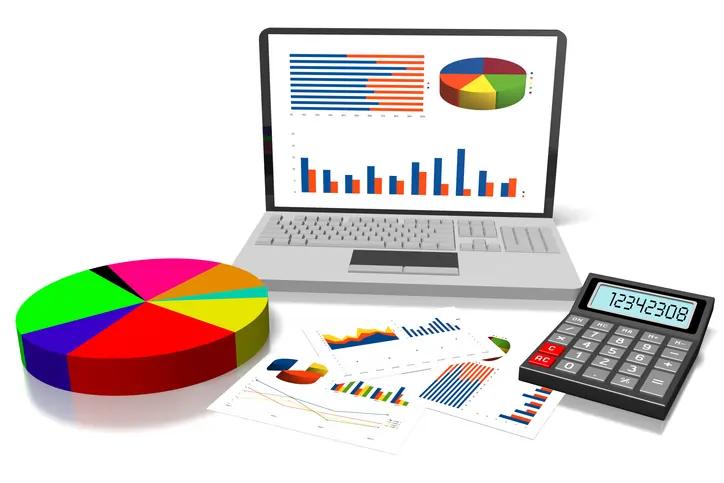5 Financial Metrics Every Small Business Should Track
5 Financial Metrics Every Small Business Should Track
Published by Wanda Rich
Posted on June 20, 2025

Published by Wanda Rich
Posted on June 20, 2025

For many small business owners, financial management can feel like an overwhelming task — especially when juggling operations, staffing, and customer relationships. But keeping track of a few essential metrics can provide clarity, reveal trends, and guide sound decisions. These indicators offer more than just insight into performance; they form the foundation for long-term stability and growth.
Whether you run a service-based firm, a retail shop, or a digital platform, these five metrics are worth reviewing regularly. Together, they provide a snapshot of how efficiently your business earns, spends, and retains money.
1. Cash Flow
Cash flow refers to the actual movement of money in and out of your business. Unlike profit, which may appear strong on paper but be tied up in unpaid invoices, cash flow reveals your real‑time ability to meet obligations like rent, payroll, and supplier payments.
Maintaining a positive cash flow ensures operational stability and enables strategic decision‑making without relying on short‑term borrowing. A sudden cash shortfall — even with solid sales — can delay investments, impact creditworthiness, or lead to missed opportunities.
Poor cash flow management remains one of the most common reasons businesses shut down. A study by SCORE highlights that 82% of small business failures are directly linked to cash flow problems, underscoring why proactive tracking matters. Reviewing monthly inflows and outflows against forecasted figures helps identify early warning signs.
In practice, this metric becomes especially important when scaling. Businesses expanding into new locations or hiring aggressively often face a cash drain before revenue catches up. Having visibility into projected cash needs — and planning for gaps — can be the difference between sustainable growth and overextension.
2. Gross Profit Margin
Gross profit margin measures how efficiently a business produces goods or services relative to its revenue. A healthy margin indicates room to reinvest in marketing, product development, or staffing. If margins begin to shrink, it may signal rising costs, ineffective pricing strategies, or inventory inefficiencies.
This metric takes on different meaning depending on business model. For a software-as-a-service company, high gross margins reflect minimal variable costs per new customer. For a brick-and-mortar retailer, margins may be tighter and more sensitive to vendor pricing or supply chain disruptions.
One common pitfall is focusing too heavily on revenue growth while ignoring margin erosion. If the cost of fulfilling each sale is rising, expanding top-line revenue may not translate into greater profitability. Regular review helps ensure that discounts, supplier changes, or inflationary pressures aren’t quietly undermining the business.
3. Operating Expenses Ratio
This ratio reflects the percentage of revenue consumed by operating expenses such as rent, wages, utilities, insurance, and administrative costs. It provides a view of how lean your business is and whether overhead is in line with revenue.
High-growth businesses often experience an uptick in operating expenses as they invest in infrastructure, marketing, or personnel. The key is ensuring that these costs eventually contribute to revenue growth. If the ratio rises but sales remain flat, it may signal misaligned spending.
In early-stage businesses, it’s common for founders to underestimate how quickly fixed costs accumulate. Office space, licenses, software subscriptions, and outsourced services can quietly drive up the ratio. Tracking this metric over time encourages owners to question which expenses are necessary and which can be deferred or negotiated.
4. Accounts Receivable Turnover
This metric shows how quickly a business collects payments from customers. A high turnover ratio indicates prompt collections and effective credit policies, while a lower ratio may point to delayed payments or inconsistent follow-up.
Service-based businesses and B2B companies often rely on invoicing, which introduces a time gap between delivering work and receiving payment. During that period, expenses such as salaries and rent continue. If too much capital is tied up in receivables, it can create a strain — even if the business appears profitable on paper.
Economic conditions can also affect this metric. In tighter credit environments, customers may stretch payment terms or delay invoices, passing financial pressure down the chain. Businesses that fail to adapt may find themselves covering shortfalls through borrowing, which adds cost and complexity. Monitoring receivables closely can prompt timely adjustments to credit terms or follow-up practices.
5. Net Profit Margin
Net profit margin reveals how much of each dollar earned actually translates into profit, after accounting for all expenses — including taxes, interest, and overhead. It is a key indicator of financial sustainability.
Unlike gross margin, which focuses on production efficiency, net margin captures the full cost structure of the business. It reflects whether strategic decisions — like outsourcing, investing in staff, or launching new offerings — are generating returns after all costs are considered.
A declining net margin may not always be a red flag. For instance, a business may see margins temporarily dip during a strategic expansion or rebranding. However, if declines persist without corresponding growth in market share or revenue, it may signal a deeper issue with cost control or pricing. Reviewing this metric quarterly allows owners to spot trends early and adjust accordingly.
Tools That Make Tracking Easier
Understanding the right metrics is only half the challenge — staying on top of them consistently requires reliable systems. Fortunately, a number of accessible tools can help small businesses streamline financial monitoring without the need for a full-time finance team.
Cash flow tracking can be simplified with platforms like QuickBooks, Xero, and Float, which offer automated cash flow projections and real-time dashboards. These tools integrate with bank accounts and invoicing systems, making it easier to anticipate shortfalls and plan ahead.
For businesses managing accounts receivable, software such as FreshBooks or Zoho Books allows for aging reports, automatic invoice reminders, and real-time payment tracking — helping reduce delays and improve cash collection.
Profitability and expense ratios can also be monitored using cloud-based accounting platforms that generate financial statements and custom reports. Most leading systems, including Wave and Sage Business Cloud, offer built-in visualizations and trend analysis to make interpretation easier for non-accountants.
Choosing the right tool depends on the size and structure of the business, but adopting one early creates a habit of financial discipline that scales as the company grows.
Building Financial Awareness for Long-Term Stability
Tracking these core financial metrics builds a foundation of awareness that supports better planning, smarter resource allocation, and stronger resilience. Each one offers insight into different aspects of performance — from day-to-day liquidity to long-term profitability. Reviewing them in combination reveals a fuller picture than any one number on its own.
While external market conditions can shift unexpectedly, internal financial discipline helps businesses stay agile and prepared. With consistent attention to these indicators, small business owners can strengthen decision-making, reduce risk, and chart a more sustainable path forward.
Explore more articles in the Business category











